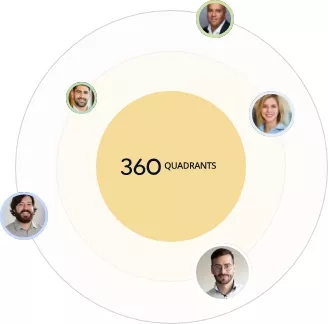Indoor Location Software is a technology that facilitates the navigation and tracking of objects and people in a building with the help of sensory information captured by mobile devices. The indoor location market comprises hardware and software that are integrated and deployed to perform the functions at various indoor locations. Technologies such as Radio Frequency (RF)-based (Wi-Fi/Bluetooth Low Energy (BLE)), sensors and tags, satellite/remote sensing, and microwave help in providing visual, real-time information of the objects and people present on-premises in the form of data and figures for the indoor location applications.
Increasing adoption of connected devices and growing demand for the indoor location technology to enhance the lean automation and robotics processes are boosting the growth of the market across the globe.
The indoor location market is segmented on the basis of components (technology, software tools, and services), deployment modes, applications, verticals, and regions. Among the technologies, the sensor and tag-based technology is a high-growth segment in the market. To monitor natural phenomena, such as heat, pressure, humidity, and air pollution, in a certain indoor space, multiple sensors are integrated with connected devices. Tags are also used to monitor products and assets in the retail and manufacturing verticals respectively. Adoption of the sensor and tag-based technology is increasing, due to the easy adoption of technology.
Among the software tools, the location analytics segment is expected to grow at the highest CAGR during the forecast period. Location analytics is a business intelligence process, used to generate insights from location-based and geographic business data. The generated insights are useful for marketers to plan business strategies and marketing campaigns.
Among the services, the managed services segment of the indoor location market is expected to have the larger market size than the professional services segment. Managed services include consulting, integration, and maintenance. These services are basically provided to other service providers, such as Internet Service Providers (ISPs), who do not have the resources to constantly upgrade or maintain faster computer networks. Consulting services determine and assist in designing the architecture for supporting the currently installed systems and software.
Among the deployment modes, the cloud segment is expected to have the larger market size than the on-premises segment. Cloud-based indoor location solution providers are developing robust cloud-based solutions for their users. Additionally, organizations are migrating to either a private or a public cloud. Moreover, the cloud deployment mode provides flexibility for business operations and can also be integrated with predictive analytics for real-time business insights.
Among the applications, the sales and marketing optimization application is expected to have the largest market share during the forecast period. The indoor location technology, when integrated with social media, helps find patterns in customer engagement. Interactive maps, visual analytics, and powerful intuitive dashboards help simplify the complexities of network data and support integrations across various departments and organizations on a global scale. Organizations can enhance their insights into tabular data by adding geographic locations to business data and mapping them.
Among the verticals, the transportation vertical is projected to have the highest CAGR in the indoor location market during the forecast period. The transportation vertical includes spaces such as airports, railway stations, bus stations, and subways, which can often be confusing for travelers in terms of navigation. Sometimes, train stations and airports are spread over large areas with many entry and exit points. It is difficult for the indoor location technology to map all the global transport locations, due to the presence of varied architecture.
Among the regions, North America is expected to have the largest market share in the indoor location market during the forecast period, owing to the early adoption of technology and the presence of a large number of indoor location providers and users. The region represents one of the well-defined and controlled economies in terms of Gross Domestic Product (GDP), technology infrastructure, and technological advancements. Enterprises in the United States (US) and Canada have willingly adopted the indoor location technology to engage with their customers. The growing number of social media users is expected to drive the growth of the market in the APAC region.
Innovative technological developments are benefiting all stakeholders in the indoor location market. However, the limited accuracy of the indoor location technology, and the lack of awareness and reluctance to use indoor location may act as challenges to the growth of the indoor location market.
The major vendors in the indoor location market are Apple (US), Broadcom (US), Cisco Systems (US), Ericsson (Sweden), GeoMoby (Australia), Google (US), Micello (US), Microsoft (US), Qualcomm (US), Senion (Sweden), STMicroelectronics (Switzerland), and Zebra Technologies (US).
Vendors who fall into this category receive high scores for most of the evaluation criteria. They have a strong and established product portfolio and a very strong market presence. They provide mature and reputable indoor location solutions. They also have strong business strategies. Apple, Google, Zebra, Qualcomm are the vendors who fall into the visionary leaders’ category.
They are established vendors with very strong business strategies. However, they are low in their product portfolios. They focus on specific type of technology related to the product. Ericsson, Cisco, and Microsoft are the vendors who fall into the dynamic differentiators’ category.
Innovators in the MicroQuadrant are vendors that have demonstrated substantial product innovations as compared to their competitors. They have a much-focused product portfolio. However, they do not have a very strong growth strategy for their overall business. Micello, STMicroelectronics, and Insiteo are the vendors who fall into the innovator's category.
They are vendors with niche product offerings and are starting to gain their position in the market. They do not have much strong business strategies, as compared to other established vendors. They might be new entrants in the market and require some more time to get significant traction in the market. GeoMoby, ComTech, Sensewhere, WRLD, and Indoo.rs are the vendors who fall into the emerging companies’ category.
indoor location market (Global)competitive leadership mapping, 2017
Source: Press Releases, Expert Interviews, and MarketsandMarkets Analysis
The technologies used in the indoor location market are divided into RF-based (Wi-Fi/BLE), sensor and tag-based, and others, which includes satellite/remote sensing and microwave. All indoor location technologies facilitate owners to access visual real-time information of the people present on-premises in the form of data and figures. In the coming years, the use of sensor and tag-based indoor location technologies is expected to increase as sensor and tag-based indoor location technology is used for asset management in the manufacturing industry. In addition, it is used to locate and track parcels in warehouses.
RF-BASED
RF-based technology includes Wi-Fi/WLAN, beacons, Bluetooth/BLE, AGPS, and UWB. This wireless electromagnetic signal is used for communication. It provides accurate localization without requiring the estimation of accurate channel parameters or any pre-configured network. These electromagnetic signals track devices such as smartphones, tablets, and laptops that receive signals to enable location-aware business solutions and boost location accuracy for consumer applications.
As it is more convenient to create a Wi-Fi environment inside a building, hence, it is a more preferred technology for creating indoor navigation. Wi-Fi has the advantage of being able to provide a data channel as well as a location methodology.
It uses two methods for location identification—triangulation and fingerprinting. Triangulation measures the signal strength from three or more Wi-Fi hotspots to triangulate the position of an object in indoor premises. In the fingerprinting method, a few seconds of turning on the Wi-Fi on a smartphone is enough to get a fingerprint of its location and associate it with a check-in location. The Wi-Fi fingerprint is then compared to a known database of fingerprints/location pairs to identify the user’s present location. The various benefits of using Wi-Fi technology for indoor location tracking include the fact that it works without GPS, covers an area of up to 150 meters, and also helps to detect the floor level.
Other radio-based technologies such as Bluetooth, UWB, and AGPS are part of radio waves that have different abilities to transmit and receive signals. A UWB radio signal enables the broadcast of information stretched over a large bandwidth (>500 MHz), which can be mutually used among numerous users. Although it can transmit extremely large amounts of data, the system emits a minimal amount of energy.
SENSOR AND TAG-BASED
The sensor technology uses Microelectromechanical Systems (MEMS), whereas the tag-based technology includes Radio Frequency Identification (RFID) tags, Quick Response (QR) code, and Near Field Communication (NFC) tags. The MEMS sensor technology is embedded in mobile handsets and it is capable of capturing and integrating data for providing indoor location solutions. Sensors are used to estimate the direction and distance traveled to provide pedestrian navigation. To monitor some phenomena such as heat, pressure, humidity, and air pollution over a certain indoor space, multiple sensor nodes are organized as a Wireless Sensor Network. Some sensors used in the indoor location technology are altimeters, gyroscopes, accelerometers, magnetometers, or barometers. These sensors are used in a dead reckoning mode to provide pedestrian navigation.
There are three tag-based solutions—QR code, NFC tags, and RFID tags. RFID tag is the use of small wireless devices or tags to identify objects and people. Originally used to track cattle, RFID tags are now used for tracking objects such as manufactured consumer products, vehicles, airline passengers, Alzheimer's patients, and pets. RFID is also called Dedicated Short-Range Communication.
SOFTWARE TOOLS - VISUALIZATION
Visualization tools enable organizations to exploit all dimensions of data, harness the power of the geospatial dimension, and better understand interactions and results in dashboards and reports. It leads to better understanding of key business metrics and turns location data and analytics into valuable knowledge for organizations. Organizations can slice and dice data in a variety of ways in dashboards and reports, including maps, to discover geographic correlations.
LOCATION ANALYTICS
Location analytics is a Business Intelligence (BI) process to generate insights from location-based or geographic business data. Location analytics, with the help of traditional metrics, unlocks the power of data by converting raw data as per the specific location into valuable insights through a more visual approach.
According to marketers, most structured as well as unstructured business data is spatially significant. Location analytics is expected to be key to each hidden or unidentified pattern in businesses. Vendors are trying to make things simple so that organizations can access, share, and analyze the location-based data coming from various data sources even from any remote location. Location analytics solutions can analyze data collected from indoor locations such as retail stores, stadiums, airports, and other locations.
CONTEXT ACCELERATOR
Context accelerator is a platform that combines rich location data with a layer of context to allow verticals to deliver personalized, relevant content and dynamic experience to mobile users. This solution allows organizations to recognize their customers’ location-based needs while respecting their privacy. It transforms location from a simple latitude and longitude to an essential actionable data of context.


